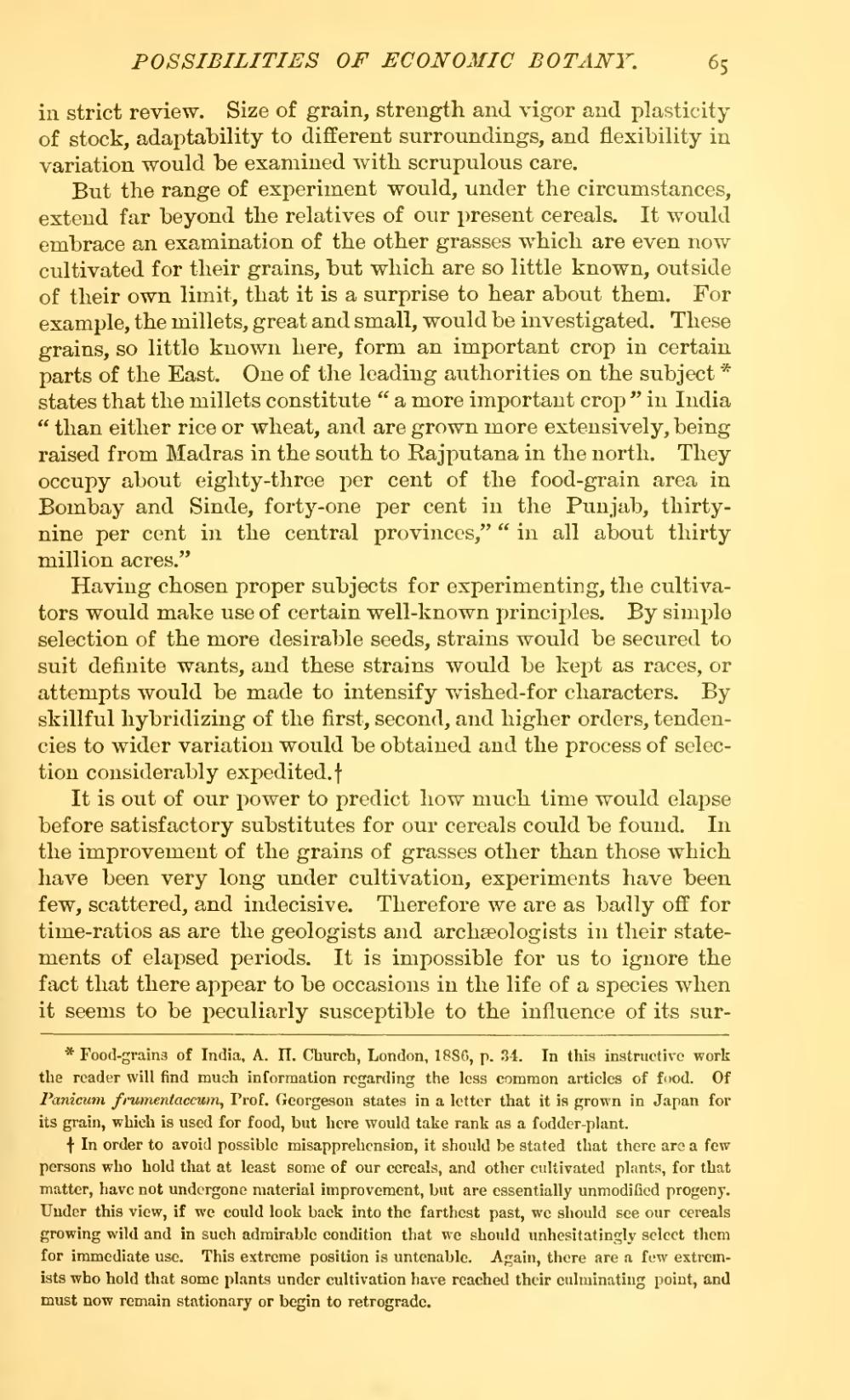in strict review. Size of grain, strength and vigor and plasticity of stock, adaptability to different surroundings, and flexibility in variation would be examined with scrupulous care.
But the range of experiment would, under the circumstances, extend far beyond the relatives of our present cereals. It would embrace an examination of the other grasses which are even now cultivated for their grains, but which are so little known, outside of their own limit, that it is a surprise to hear about them. For example, the millets, great and small, would be investigated. These grains, so little known here, form an important crop in certain parts of the East. One of the leading authorities on the subject[1] states that the millets constitute "a more important crop" in India "than either rice or wheat, and are grown more extensively, being raised from Madras in the south to Rajputana in the north. They occupy about eighty-three per cent of the food-grain area in Bombay and Sinde, forty-one per cent in the Punjab, thirty-nine per cent in the central provinces," "in all about thirty million acres."
Having chosen proper subjects for experimenting, the cultivators would make use of certain well-known principles. By simple selection of the more desirable seeds, strains would be secured to suit definite wants, and these strains would be kept as races, or attempts would be made to intensify wished-for characters. By skillful hybridizing of the first, second, and higher orders, tendencies to wider variation would be obtained and the process of selection considerably expedited.[2]
It is out of our power to predict how much time would elapse before satisfactory substitutes for our cereals could be found. In the improvement of the grains of grasses other than those which have been very long under cultivation, experiments have been few, scattered, and indecisive. Therefore we are as badly off for time-ratios as are the geologists and archaeologists in their statements of elapsed periods. It is impossible for us to ignore the fact that there appear to be occasions in the life of a species when it seems to be peculiarly susceptible to the influence of its sur-
- ↑ Food-grains of India, A. II. Church, London, 1886, p. 34. In this instructive work the reader will find much information regarding the less common articles of food. Of Panicum frumentaccum. Prof. Georgeson states in a letter that it is grown in Japan for its grain, which is used for food, but here would take rank as a fodder-plant.
- ↑ In order to avoid possible misapprehension, it should be stated that there are a few persons who hold that at least some of our cereals, and other cultivated plants, for that matter, have not undergone material improvement, but are essentially unmodified progeny. Under this view, if we could look back into the farthest past, we should see our cereals growing wild and in such admirable condition that we should unhesitatingly select them for immediate use. This extreme position is untenable. Again, there are a few extremists who hold that some plants under cultivation have reached their culminating point, and must now remain stationary or begin to retrograde.

